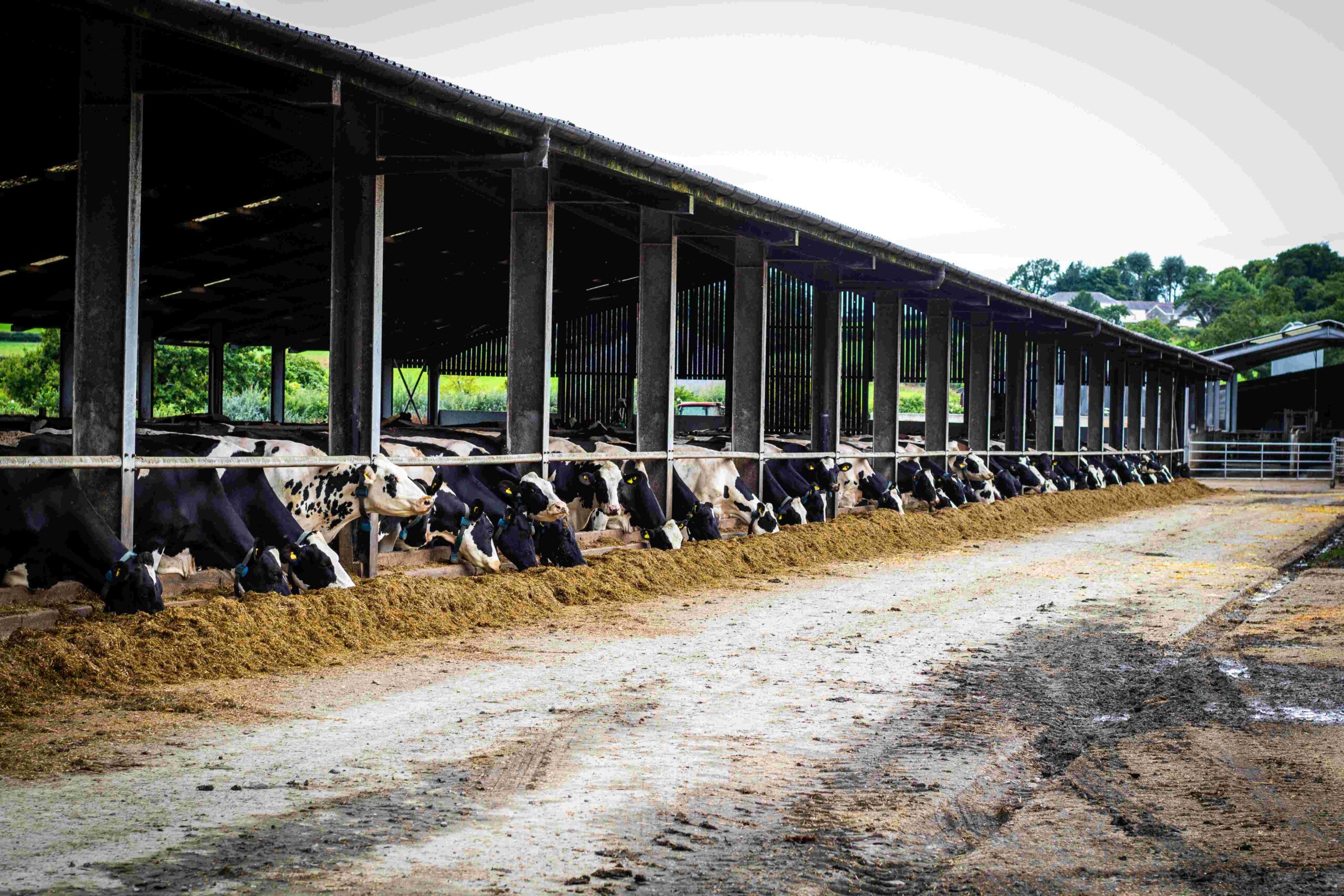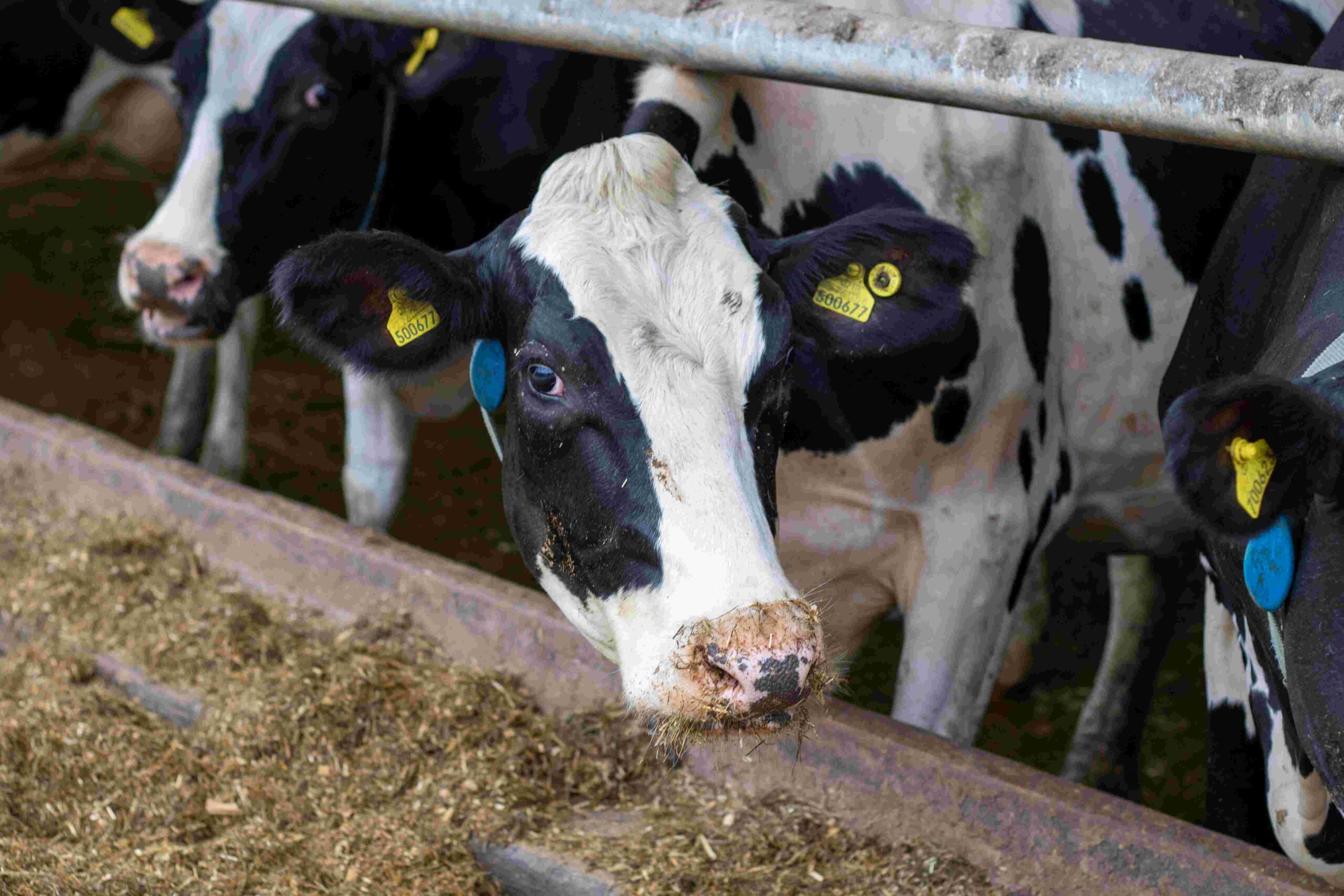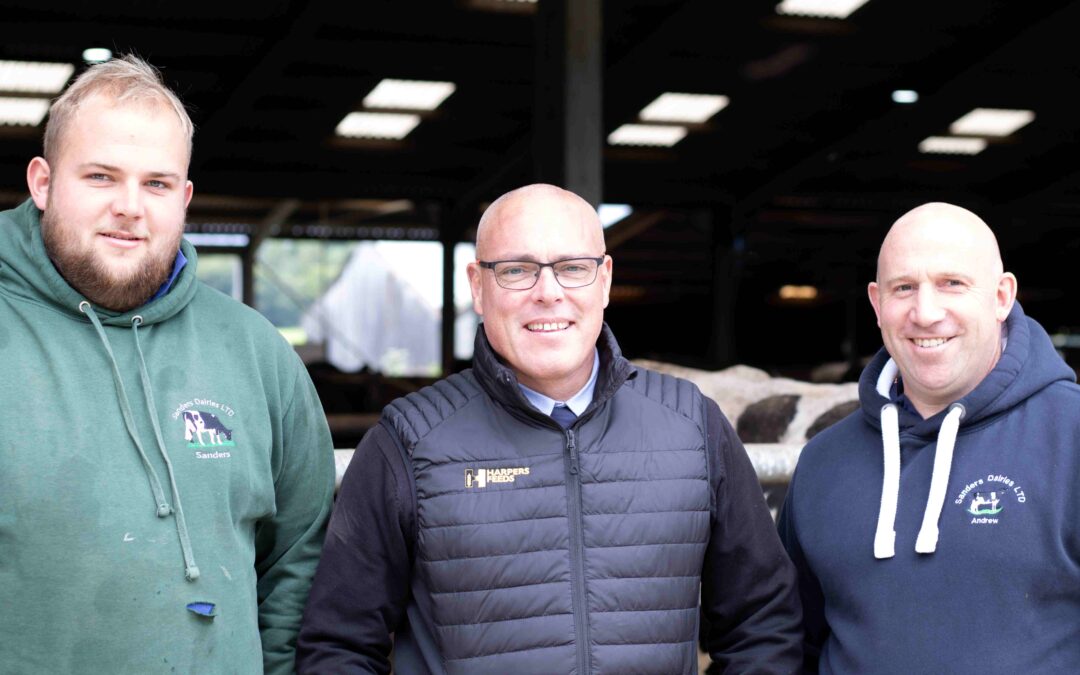How dairy enterprise is hitting low purchased feed costs. Lowering protein in milker diets and making high-quality forage has helped lift fertility and cow health while minimising purchased feed costs at one South West dairy.

Lifting milk from forage and forward-buying feed is helping Devonshire dairy producers Andrew and Jennifer Sanders achieve annual purchased feed costs of sub 9p/litre.
After starting their dairy farming careers on the first rung of the ladder, a council farm in North Devon, the business partners took over Jennifer’s parents’ tenancy on the Castle Hill estate on a 35-year FBT.
They arrived at the farm with 150 cows, and in the past 18 years, they have grown the herd to 720 cows plus followers.
Cows are yielding 11,500 litres at 4.07% butterfat and 3.37% protein on three-times-a-day milking with milk supplied to Arla on the ASDA aligned contract.
Expansion has been gradual over the years as investment in facilities have taken place and more land and additional farms have been secured for youngstock and dry cows.
Two sand-cubicle buildings have been erected to accommodate more milkers, and a 30/60 semi-rapid exit Dairymaster parlour replaced their existing 12/24 swingover.
Dairy Feeding
During that time cow breed has changed from Friesian/Swedish Red to Holstein as they have veered away from grazing toward a higher-output system.
But their focus on milk from forage has remained steadfast.
Forward buying raw materials 12 months in advance, making high-quality forage and feeding 4kg of homegrown crimped wheat have seen purchased feed costs fall.
Being on an Arla contract, the Sanders stopped feeding soya two years ago in favour of NovaPro, rape and beans and have gained more points during their Arla audit, which translates to a premium milk price.
Even if soya is trading at a discount, their feed adviser Richard Waters, Dairy Consultant from Harpers Feeds, says the Arla contract means ‘soya is off the table’, particularly when you factor in lucrative B litres that the Sanders will be supplying in the next few months.
But this also has its advantages for cow health.
“Instead of being a single protein source there are three which have different absorption rates through the rumen. More starch and protein sources give the best throughputs because they are absorbed at different speeds, so by mixing the offering, you get a longer spread.”
The milking ration has been reduced from 17% protein in total to 15%.
“We haven’t seen any negatives in terms of feed rate or fertility by feeding much lower protein diets. We have seen a huge benefit in terms of cow lameness,” adds Richard.
At their most recent quarterly mobility scoring visit in May, only 5.4% of cows scored 2 or more.
The feed rate has been lowered from 0.45kg/litre to 0.29kg/litre by increasing milk from forage to 4,200 litres a cow.
The Sanders aim to take five cuts of silage annually and have invested in new clamps to allow maize to be stored at the dairy. Previously, it was kept at another unit with trailer loads brought back daily, but it was heating up and getting rained on, so dry matter varied, says Andrew.
This year’s first cut averaged 32.8% dry matter, 15% protein and 11.5ME while last season’s maize analysed 45% dry matter, 11.8ME and 35% starch.
A clay-lined slurry lagoon has been dug on a 300-acre block of ground to allow slurry to be umbilical spread in a timely fashion.
Dry cow diet
Changing to a single partial Dietary Cation Anion Balance (DCAB) diet throughout the dry cow period has transformed cow health.
Previously, cows were dried off and moved to the dry-cow unit and fed round bales for 2-3 weeks.
Dry cows would then transition to a ‘Gordie Jones-style’ DCAB diet with a high inclusion of straw for the final three weeks before calving.
But cows were losing condition.
“We weren’t getting a smooth transition. When we worked out the energy fed in terms of weight gain for the new ration, it is so minimal that it narrows the gap between dry and fresh,” explains Richard.
The partial DCAB diet is higher in energy than most dry-cow diets at 147 megajoules and 13% protein. It comprises of maize, grass silage, processed straw, dry cow minerals and small amounts of caustic wheat, NovaPro, rape and urea.
The higher energy diet is causing negligible weight gain.
“There is a small amount of weight added, no more than 5-6kg, which is not enough to create any problems, and it certainly doesn’t supress appetite with cows eating 16kg DM daily,” adds Richard.
Since returning to a ‘simple method of feeding’, the Sanders have gone from dealing with weekly displaced abomasums to none out of 389 calvings in the past five months. Furthermore, milk fevers and retained placentas are running at 1% and 0.2%, respectively.
Four of the retained placentas occurred on cows that calved with twins and the fourth one was a cow that required a caesarean.
Breeding
This improvement in transition health is translating to better fertility. The herd’s pregnancy rate for the last 12 rolling months averaged 27% with 70% of cows conceiving to first service.
Their son Ryan, aged 23, takes charge of the breeding decisions and places a heavy emphasis on milk production alongside fat, protein and health.
His criteria are that heifers must give at least 9,000 litres in first lactation with replacements largely born from maiden and first-lactation heifers.
This has been beneficial for milk yield with cows now averaging 39 litres despite one-third of the herd comprising heifers.
“Heifers get two chances of sexed, and then they go to Aberdeen-Angus. [But] we only serve [some] first lactation based on genomic PLI and milking performance,” explains Ryan, who started genomic testing heifers in 2018.
Currently, maiden heifers are averaging 1.1 services to conception with sexed semen.
Cows are mostly served to British Blue unless they are standout. They operate a voluntary waiting period of 50 days with Dairymaster MooMonitor neck collars used to detect heats.
Dairy Business Future

Andrew and Ryan aspire to take on another unit and would like to increase yields to 12,000 litres.
Andrew believes he was ‘lucky’ to get into dairy when he did and says not enough starter farmers are available to young people to gain a foot on the ladder anymore.
“Young people need more opportunities. We are losing a lot of national dairy holdings because they require so much investment in infrastructure, but young people need long-term security, so they have time to build up equity for the next step on the farming ladder.”
Farm Facts:
- Milking 650 cows, 720 in the herd
- Farming 1,200 acres, mix of FBT, owned and rented
- Growing 380 acres of maize, 200 acres of wheat, 100 acres of permanent pasture and 520 of temporary grassland.
- All-year-round calving
- Selling milk to Arla
- Yielding 11,500 litres at 4.07% butterfat and 3.37% protein
- Milking three-times-a-day (eight-hour splits)
- Somatic cell count of 70,000 cells/ml and bactoscan or 18
- Calving interval: 380 days
- Milking through a 30/60 semi rapid exit Dairymaster parlour.






